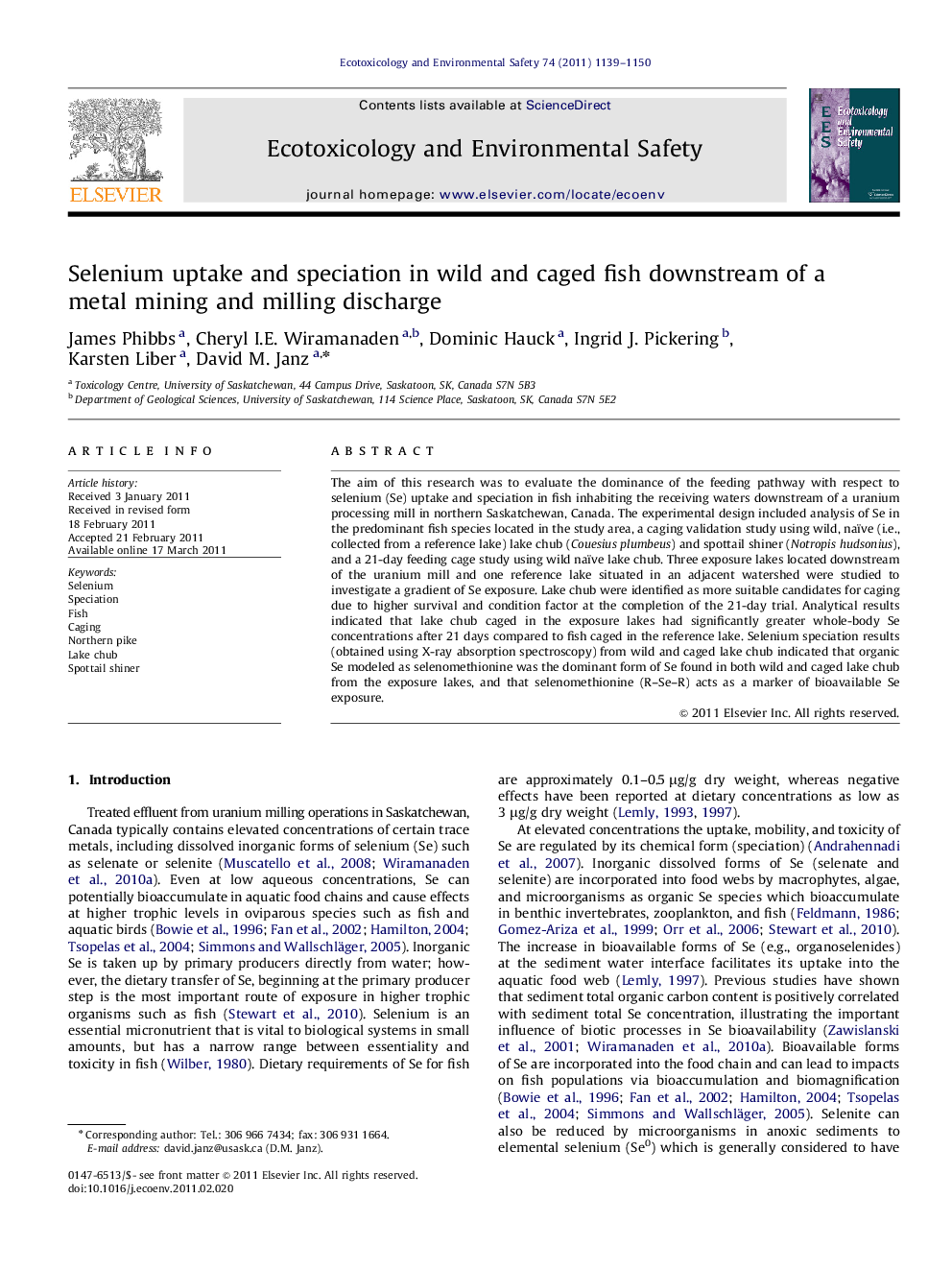| کد مقاله | کد نشریه | سال انتشار | مقاله انگلیسی | نسخه تمام متن |
|---|---|---|---|---|
| 4421188 | 1308506 | 2011 | 12 صفحه PDF | دانلود رایگان |

The aim of this research was to evaluate the dominance of the feeding pathway with respect to selenium (Se) uptake and speciation in fish inhabiting the receiving waters downstream of a uranium processing mill in northern Saskatchewan, Canada. The experimental design included analysis of Se in the predominant fish species located in the study area, a caging validation study using wild, naïve (i.e., collected from a reference lake) lake chub (Couesius plumbeus) and spottail shiner (Notropis hudsonius), and a 21-day feeding cage study using wild naïve lake chub. Three exposure lakes located downstream of the uranium mill and one reference lake situated in an adjacent watershed were studied to investigate a gradient of Se exposure. Lake chub were identified as more suitable candidates for caging due to higher survival and condition factor at the completion of the 21-day trial. Analytical results indicated that lake chub caged in the exposure lakes had significantly greater whole-body Se concentrations after 21 days compared to fish caged in the reference lake. Selenium speciation results (obtained using X-ray absorption spectroscopy) from wild and caged lake chub indicated that organic Se modeled as selenomethionine was the dominant form of Se found in both wild and caged lake chub from the exposure lakes, and that selenomethionine (R–Se–R) acts as a marker of bioavailable Se exposure.
Journal: Ecotoxicology and Environmental Safety - Volume 74, Issue 5, July 2011, Pages 1139–1150